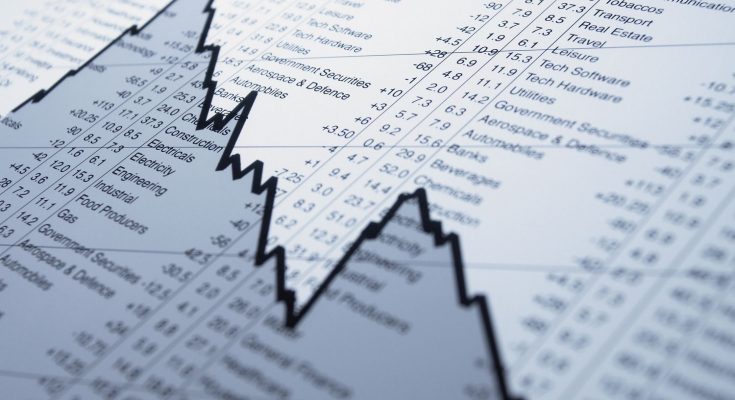Economic cycles include periods of growth and decline, and while downturns don't last nearly as long as expansions on average they can be especially costly for investors. Since 1937, the S&P 500 has lost 32% on average in drawdowns associated with recessions. Luckily, there are strategies available to limit portfolio losses and even log some gains during a recession.
Key Takeaways
A recession is a significant, widespread and extended decline in economic activity.Riskier assets like stocks and high-yield bonds tend to lose value in a recession, while gold and U.S. Treasuries appreciate.Shares of large companies with ample, steady cash flows and dividends tend to outperform economically sensitive stocks in downturns.Investors can't hope to time a recession reliably, but diversification and measured steps to control risk can help preserve capital and position portfolios to profit from a recovery.
What Is a Recession?
A recession is a significant and widespread decline in economic activity typically lasting more than a few months. It is often defined in the media as two consecutive quarters of negative gross domestic product (GDP)growth. GDP is a measure of all goods and services produced in a country.
Recession symptoms include faltering confidence on the part of consumers and businesses, weakening employment, falling real incomes, and declining sales and production—not exactly the environment that tends to lead to investor confidence and higher stock prices. In fact, recessions increase investors' risk aversion.
The National Bureau of Economic Research dates recessions from the peak of the prior economic expansion to the trough of the economic decline. By that definition, recessions end at the very outset of a recovery,
Can the Stock Market Predict a Recession?
Economist Paul Samuelson famously quipped that the stock market has predicted nine of the last five recessions. That was in 1966, and 50 years later the stock market's record as a recession signal remained comparable.
Bear markets associated with recessions tend to start and trough before economic activity does, and to last longer than other bear markets.
But of course there's no way of knowing ahead of, or in the middle of, a stock decline how deep or long-lasting it might prove. An inverted yield curve has historically been the most reliable recession indicator, though hardly an infallible one.
Overreacting to any recession signal could be costly: economic expansions often last longer than many expect, and deliver some of the strongest stock-market gains near the end.
How Asset Classes Preform in Recessions
Recall that recessions are relatively rare but expose economies and portfolios to the possibility of rapid declines, leading to growing risk aversion among investors and companies. As risk premia—the excess returns investors require over risk-free assets—rise, the prices of risk assets decline accordingly. As you would expect, the asset classes with returns less reliant on economic growth tend to outperform.
Gold and bonds, U.S. government as well as investment-grade corporates, have historically fared best during recessions, while high-yield bonds and commodities have traditionally suffered alongside stocks.
Experienced investors know they are unlikely to predict a recession in time to flee risk assets for safe harbors. A diversified portfolio stands an excellent chance of recouping losses sustained in a recession during the subsequent recovery.
Stock Picking During Recessions
The safest stocks to own in a recession are those of large, reliably profitable companies with a long track record of weathering downturns and bear markets. Companies with strong balance sheets and healthycash flows tend to fare much better in a recession than those carrying heavy debt or facing big declines in the demand for their products.
Historically, the consumer staples sector has outperformed during recessions, because it supplies products that consumers tend to buy regardless of economic conditions or their financial situation. Consumer staples include food, beverages, household goods, alcohol, tobacco, and toiletries.
In contrast, appliance retailers, auto makers and technology suppliers can suffer as consumers and companies cut spending.
Investing for Recovery
Recessions are relatively rare events, and countries have fiscal and monetary policy tools that promote recoveries. Once the imbalances that led to the recession are corrected, economies tend to rebound even in the absence of policy support.
As a recovery takes hold, recession risk factors such as high operating leverage and a dependence on economic momentum can turn into advantages for growth and small-cap stocks that may have becomeundervalued in the meantime.
In fixed-income markets, increased demand for risk makes corporate debt of all grades and mortgage-backed securities relatively more attractive. As risk premium declines, so do the yield spreads for such debt over U.S. Treasuries with a similar maturity. Government bonds tend to decline, pushing yields up. That means riskier debt could still lose value in absolute terms even if it outperforms Treasuries.
A return to growth also tends to be good news for commodities, since higher economic activity boosts demand for raw materials. Remember, however, that commodities are traded on a global basis—the U.S. economy isn't the sole driver of demand for these resources.
The Bottom Line
When recessions strike, it's best to focus on the long-term horizon and manage your exposures, limiting risk and setting aside capital to invest during the recovery.
While no investor can hope to reliably time the onset of a recession or should respond by fleeing risk assets entirely, prudent diversification ahead of time can preserve capital and position you to profit from a recovery.
This article is from https://www.investopedia.com/, if there is any copyright issue, please contact the webmaster to delete it.









